Bicon Bulletin - November 2005
UPDATE! Bicon World Symposium 2005
Bicon hosted over 450 dental professionals from 30 countries at its World Symposium in Boston, MA, USA from September 8-10, 2005. Bicon is celebrating the 20th Anniversary of its implant design. The design has remained unchanged since Mr. Thomas Driskell brought the implant to market in 1985. Over thirty-five dentists, researchers and engineers presented their work during the three-day symposium.
Please visit www.bicon.com/20th to view the keynote video, lectures, photo gallery, Bicon timeline and much more! |
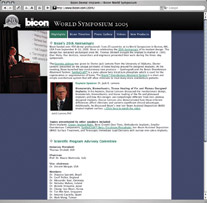 |
Brevis™ Overdenture System
 |
Bicon’s new Brevis™ Overdenture System is designed to work with all Bicon implant lengths and diameters, offering exceptional restorative simplicity and flexibility. The Brevis™ System provides a lower profile overdenture abutment which achieves 3.0mm of reduced height compared to the o-ring abutment system. The Brevis™ Abutment is packaged with its own pink titanium housing. |
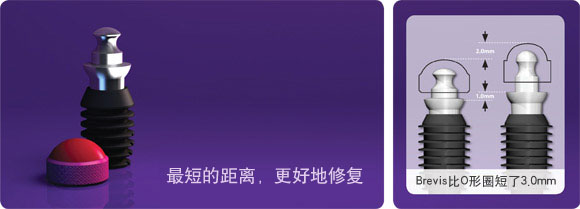 |
Brevis Chairside Technique
 |
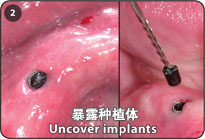 |
 |
|
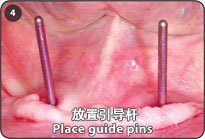 |
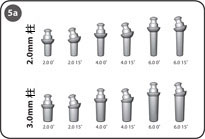 |
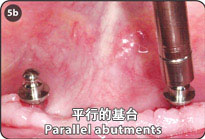 |
 |
 |
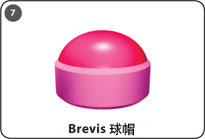 |
 |
 |
 |
 |
 |
 |
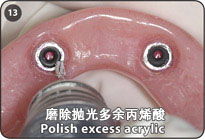 |
 |
1. A registration of the denture’s occlusal relationship prior to the uncovering of the implants will assure that the denture is not inappropriately displaced by the abutment or its housing.
2. Uncover each implant using a small crestal incision and use the healing plug removal instrument to facilitate the removal of the black healing plug.
3. Use a shoulder depth gauge to facilitate the selection of the abutment height.
4. Place guide pins into the implants to determine their axial inclinations.
5. Rotate a combination of 0˚ and/or 15˚ angled abutments to achieve parallelism prior to their being seated. Brevis abutments are available in heights of 2.0, 4.0 and 6.0mm.
6. The top of the abutment may be marked with a felt tip pen to indicate the location of the abutment on the denture. Alternatively, place soft wax in the denture to act as a pressure indicator to determine the relative position of the abutments.
7. Place a Brevis housing on each abutment
intra-orally.
8. Liberally relieve denture to accommodate the Brevis housings. Confirm clearance for housings by placing the denture over the housings.
9. Remove the Brevis housings and place a piece of rubber dam over the abutments to act as an apron to prevent acrylic from locking onto an abutment. Ensure that the rubber dam protects the undercut of the abutment from acrylic, by placing it above the shoulder of the abutment. Place a Brevis housing back onto each abutment.
10. Inject Vaseline™ under the rubber dam aprons to serve as an additional precaution to prevent acrylic from locking under the abutments during the chairside pickup of the Brevis housings.
11. Inject flowable acrylic around the Brevis housings and into the relieved portions of the existing denture.
12. Place the denture into the mouth and instruct patient to clench bilaterally on cotton rolls to assure proper bilaterally uniform seating of the denture.
13. Polish the excess acrylic around the Brevis housings after the removal of the rubber dam.
14. Radiograph of two Bicon implants and Brevis abutments. It is paramount that overdentures be
completely tissue borne and only implant retained. If the acrylic is too viscous or only placed in the denture, it may cause displacement of
the housing resulting in a misalignment of the housing and excessive wear of the rubber o-rings.
Note: If the denture is inadvertently locked onto the Brevis abutment, it is advisable to tap it off rather than
attempting to cut it off.
The denture may be notched to facilitate the placement of a tapping instrument. Either the denture will be removed from the
abutment or the abutment will be removed from the implant.
Product News
NEW! SynthoGraft™: The Next Generation of Regeneration™!
|
 |
Recent Publications / Abstracts
• Gentile, M., Chuang, S.K., & Dodson, T., Survival Estimates and Risk Factors for Failure with 6 x 5.7 mm Implants, The International Journal of Oral & Maxillofacial Implants, In press, November/December 2005.
• Dibart, S., Warbington, M., Su, M.F., Skobe, Z., In Vitro Evaluation of the Implant-Abutment Bacterial Seal: The Locking Taper System, The International Journal of Oral & Maxillofacial Implants, Vol. 20, No. 5, p. 732-737, September 2005.
• Coelho, P.G. , Lemons, J.E., IBAD Nanothick Bioceramic Incorporation on Metallic Implants for Bone Healing Enhancement. From Physico Chemical Charaterization to In-vivo Performance Evaluation, NSTI-Nanotech, Vol. 1, 2005.
• Kim, C., Gwangju,Chung, Fit of Fixture/ Abutment Interface of Internal Connection Implant Systems, AO Annual Meeting, Orlando, FL March 2005.
• Coelho, P.G., Lemons, J.E., Morphological and Chemical Assessment of Two Thin-film Ion Beam Assisted Deposited Bioceramic Coated Surfaces on Ti-6Al-4V Implants, AO Annual Meeting, Orlando, FL, 2005.
2005 Bicon Educational Opportunities & Events
As always, our calendar is replete with educational opportunities for you, your referring dentists, staff, and laboratory technicians. Courses, lectures, events, and exhibits are frequently added, so please refer to our online calendar for the most up-to-date information.